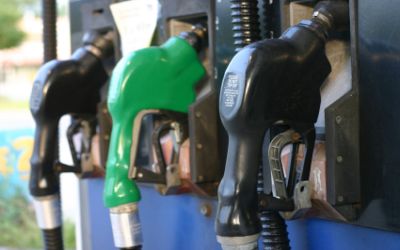EPA’s emissions update missed opportunity for ethanol
Update of fuel economy and emissions standards for new cars fails to encourage role ethanol can play in reducing emissions.

The U.S. Environmental Protection Agency and Department of Transportation on Tuesday issued the final Safer Affordable Fuel-Efficient (SAFE) Vehicles Rule for 2021-2026 vehicle fuel economy and emissions standards for Model Years 2021-2026 passenger cars and light trucks. Members of the ethanol sector said the rule represents a missed opportunity to encourage use of ethanol as a high octane, low carbon fuel source.
EPA said the SAFE Vehicles Rule reflects the realities of today’s markets, including substantially lower oil prices than in the original 2012 projection, significant increases in U.S. oil production, and growing consumer demand for larger vehicles. Under the SAFE Rule, the projected overall industry average required fuel economy in MYs 2021-2026 is 40.4 miles per gallon, compared to 46.7 mpg projected requirement in MY 2025 under the 2012 standards, and the new rule reduces the number of credits that are not associated with improved fuel economy.
According to the Renewable Fuels Association, the final rule ignores the input of automakers, ethanol producers, farmers, environmental groups, retailers and others who called on the agencies to establish a pathway in the rule for transitioning to high-octane low carbon liquid fuels. In response to hundreds of comments calling for the inclusion of high octane fuels as a tool to help automakers meet more stringent fuel economy and emissions requirements, EPA said only that “establishing a higher minimum octane for gasoline is a complex undertaking” and “the present rulemaking is not the appropriate vehicle to set octane levels.”
In addition, EPA said in the final rule it “also is declining to adopt new incentives for flex-fueled vehicles (FFVs) (vehicles designed to operate on gasoline or E85 or a mixture), as some commenters suggested.” The agency said FFV incentives are “outside the scope” of the vehicle fuel economy rule, despite the fact that the rule includes incentives for natural gas vehicles, electric vehicles, and other alternative fuel vehicles.
As an example, EPA’s rule assumes that electric vehicles have no “upstream” greenhouse gas emissions related to their use; in other words, the agency completely ignores emissions related to producing electricity from coal, natural gas, and other sources and distributing the electricity to the vehicle. This results in a significant fuel economy “credit” for electric vehicles that is not based on any real emissions reduction, RFA said.
American Coalition for Ethanol (ACE) chief executive officer Brian Jennings noted, “The final rule is a missed opportunity to provide a roadmap for high octane mid-level ethanol blends after EPA specifically requested comments on the role 100 Research Octane Number (RON) E30 could play to help automakers meet fuel economy and emissions standards. We are also disappointed the rule appears to give special treatment to natural gas vehicles but fails to extend much needed incentives for the continued production of flexible fuel vehicles (FFVs), just another example of EPA choosing fossil fuels over low carbon fuels and rural America.”
RFA president and CEO Geoff Cooper also said the final rule was a missed opportunity and another time where EPA sided with the oil industry. “Of all the stakeholders who provided input to EPA on the topic of octane, only the oil industry voiced opposition to EPA using its authority to set standards for higher-octane fuels. Once again, EPA has sided with the oil industry over automakers, biofuel producers, farmers, environmental advocates, and consumers. This rule should have established the roadmap toward cleaner, more efficient, more affordable liquid fuels for our nation’s consumers. Instead, it sends our nation’s vehicles and fuels down yet another pothole-filled road to ruin,” Cooper said.
About the Author(s)
You May Also Like





